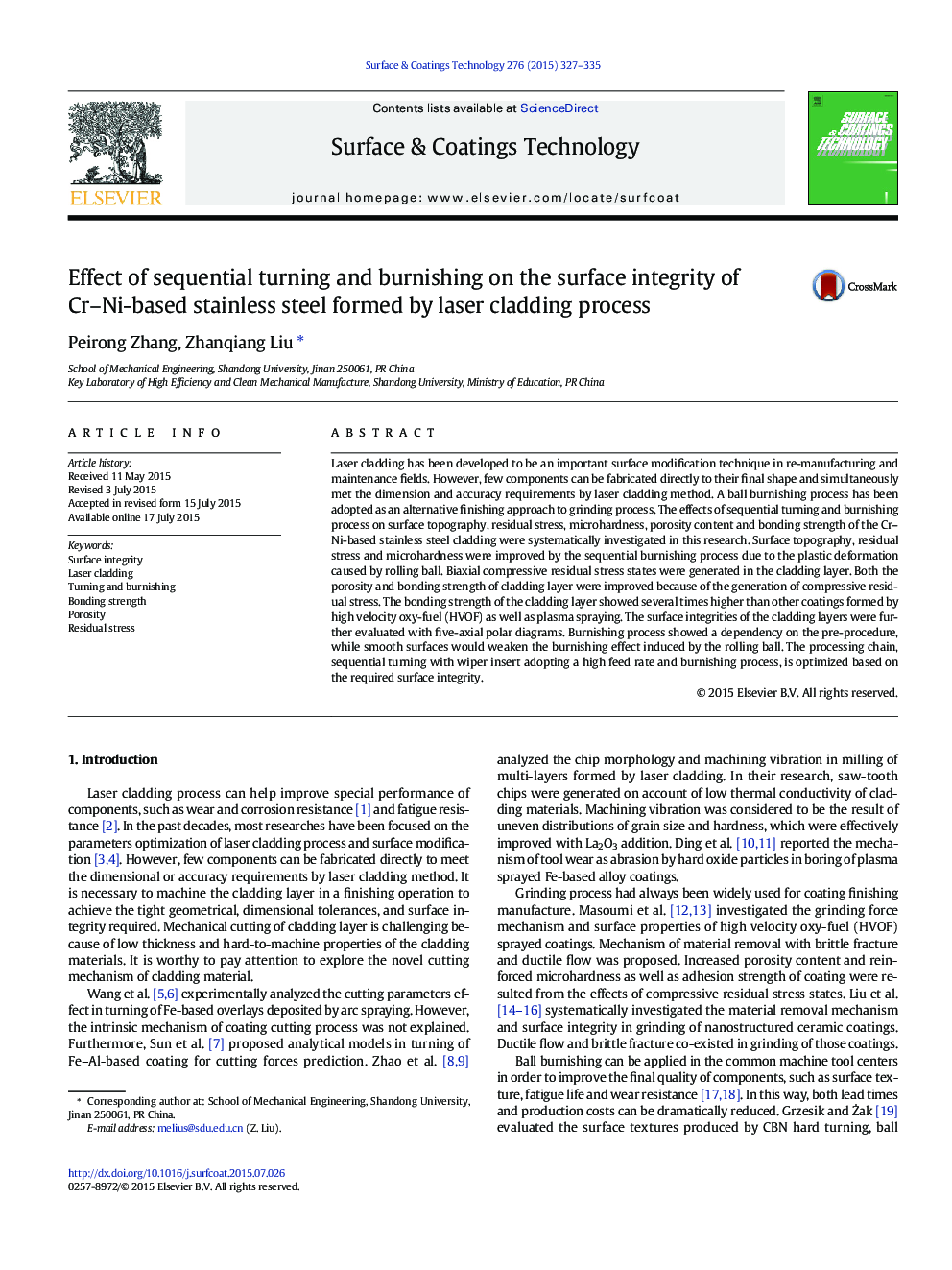| Article ID | Journal | Published Year | Pages | File Type |
|---|---|---|---|---|
| 1656989 | Surface and Coatings Technology | 2015 | 9 Pages |
•Surface integrity including interfacial properties was analyzed systematically.•Five-axial polar diagram was used for comprehensive evaluation of surface integrities.•Hybrid processing chain with LPB and finish turning for cladding cutting was proposed.•Both additive manufacturing and subsequent cutting processes were considered.
Laser cladding has been developed to be an important surface modification technique in re-manufacturing and maintenance fields. However, few components can be fabricated directly to their final shape and simultaneously met the dimension and accuracy requirements by laser cladding method. A ball burnishing process has been adopted as an alternative finishing approach to grinding process. The effects of sequential turning and burnishing process on surface topography, residual stress, microhardness, porosity content and bonding strength of the Cr–Ni-based stainless steel cladding were systematically investigated in this research. Surface topography, residual stress and microhardness were improved by the sequential burnishing process due to the plastic deformation caused by rolling ball. Biaxial compressive residual stress states were generated in the cladding layer. Both the porosity and bonding strength of cladding layer were improved because of the generation of compressive residual stress. The bonding strength of the cladding layer showed several times higher than other coatings formed by high velocity oxy-fuel (HVOF) as well as plasma spraying. The surface integrities of the cladding layers were further evaluated with five-axial polar diagrams. Burnishing process showed a dependency on the pre-procedure, while smooth surfaces would weaken the burnishing effect induced by the rolling ball. The processing chain, sequential turning with wiper insert adopting a high feed rate and burnishing process, is optimized based on the required surface integrity.
